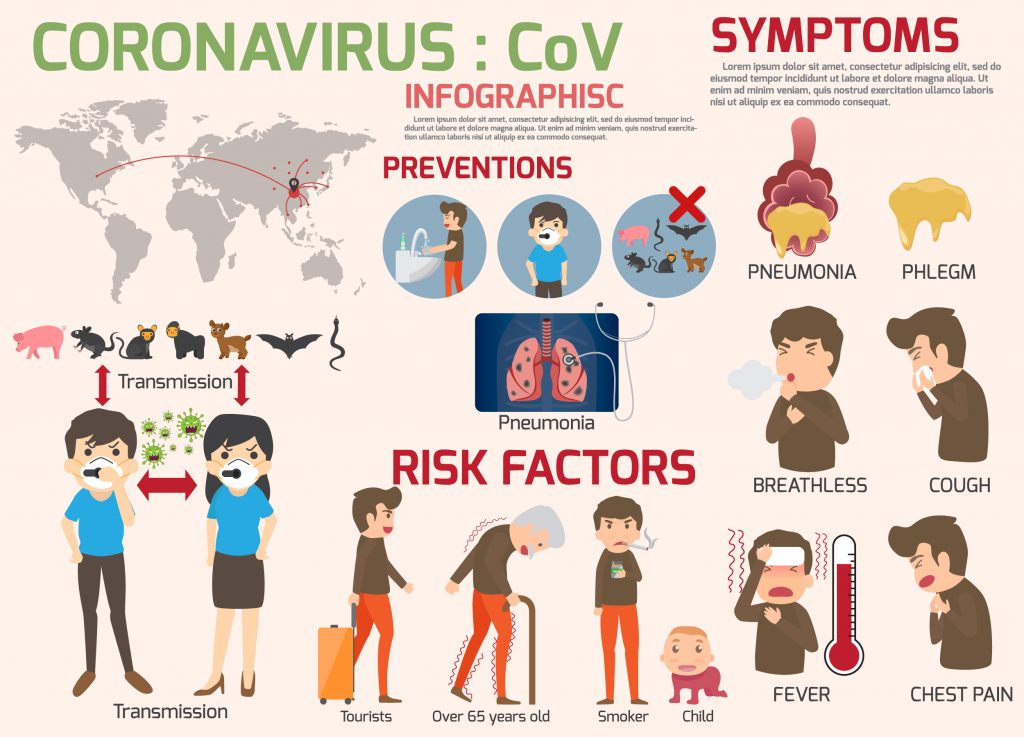The Coronavirus has disrupted life in America and worldwide. US cities from San Francisco to Philadelphia are taking emergency measures like closing bars and restaurants, and warning people to stay inside, as countries around the world place their own restrictions and curfews to try to slow the spread of the disease. Coronavirus is very contagious whether you are experiences symptoms or not.
In these circumstances, it’s perfectly normal to feel anxious or afraid. The disease has spread at an alarming rate, and profoundly disrupted our lives already, and it’s likely to get worse before it gets better.
Acknowledge and accept your fear — it’s a natural response that can help you stay safe — but don’t give into panic. The vast majority of people exposed to COVID-19 will survive, and most of us can prevent exposure by taking reasonable precautions. We hope this article helps you put this pandemic in perspective, and make it through with as little risk and discomfort as possible.
Why is it an Emergency, and What Symptoms Should you Look out for?
Coronavirus disease 2019, AKA COVID-19 is an airborne respiratory disease. Like other respiratory diseases such as the flu, coronavirus spreads primarily through droplets sprayed by the lungs when an infected person sneezes or coughs. People nearby primarily become infected by breathing in these tiny droplets (especially through the nose), causing the virus to infect the respiratory tract.
You may also be able to become infected through droplets hitting your eyes, or by touching a surface contaminated with the virus and then touching your face, but scientists do not know this for sure.
Once the virus enters your system, it begins to infect the cells in your upper respiratory tract, causing symptoms to appear within 2-14 days (about 5 days on average). It is important to be aware of the symptoms of the Coronavirus which generally feel like a flu at first — a dry cough, fever, shortness of breath, fatigue, headaches and muscle aches. For most people, that’s as bad as it gets. Roughly 4 in 5 infected people will have an experience similar to a bad flu, then get better. According to the Coronavirus Resource Center, most people will start to recover within a week or two of symptoms appearing.
However, for some people — particularly those with compromised immune systems or other underlying conditions, COVID-19 can be life threatening. Your lungs have small air sacs called alveoli that absorb oxygen. If coronavirus infects theIf these sacks, they can become inflamed and filled with fluid, preventing them from absorbing oxygen. This condition, known as pneumonia, can require hospitalization and may even lead to death.
While people die of pneumonia from the flu every year, COVID-19 is worse than a typical flu. How much worse? Scientists aren’t sure yet. The mortality rate is thought to be between 1% and 5%, but some estimates are significantly higher. Scientists also don’t fully understand how long the disease remains infectious; people may continue to carry it after they recover, increasing the danger for others.
Putting Coronavirus in Perspective
Like the flu, COVID-19 is most dangerous for the elderly and people who have suppressed immune systems or other health conditions. For about 80% of patients, the disease is relatively mild according to the World Health Organization — you’ll feel miserable, but you won’t be in serious danger. However, the disease can kill healthy people.
But the biggest problem is that, for those of us who aren’t healthy to stay safe, all of us have to be careful. People with healthy immune systems can carry Coronavirus without experiences syptoms, potentially putting their family, friends, coworkers and neighbors at risk. Whether you’re at risk or not, it’s extremely important to take precautions.
 Minimizing Your Risk
Minimizing Your Risk
The best thing you can do if you haven’t been exposed to COVID19 is to minimize exposure. It is recommended to stay home if possible, and maintain a 6ft distance from all other people.
Wash your hands often, and do not touch your face without thoroughly washing your hands first. If you cough or sneeze, cough into a tissue and immediately throw it out, or else cough into your elbow.
The key is social distancing, many of our local municipalities are issuing shelter in place orders and schools maybe closed until summer break.
If you get sick, you’ll need to take some extra precautions. Call ahead to your doctor before coming in. Your doctor may have special procedures to prevent you from exposing others to the virus. Wear a face mask when you do see your doctor, and stay away from others (including pets) until you recover, except to receive medical care. Checkout this CDC resource for more information if you do suspect COVID-19.
Getting Through The Coronavirus Pandemic Together
We’re social creatures, and it’s hard to lock ourselves away from each other. But remember, the COVID-19 outbreak won’t last forever. Putting up with the isolation for a few weeks could literally save your life, and the lives of others around you. If you are experiencing symptoms of Coronavirus, don’t hesitate to use Heally to get a Coronavirus assessment via telemedicine. And remember, however, isolated you feel, we’re all in this together. And we will get through this together.

